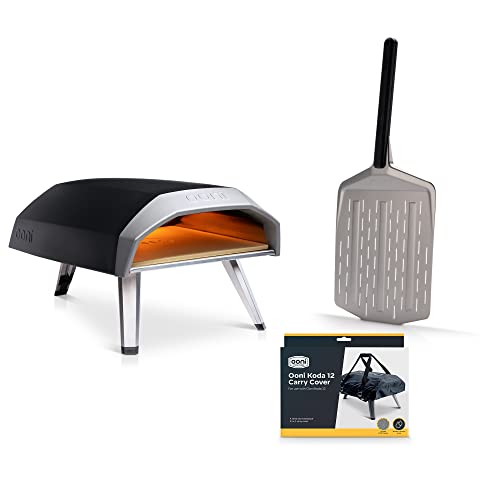Which pocket-sized powerhouse wins your couch’s crown — Roku’s slick simplicity or Amazon’s 4K brawler — and which one will actually stop you from losing the remote (or caring)?
Two tiny streaming sticks enter your living room ring — ROKU vs FIRE TV — so your couch can stop arguing. This slightly snarky guide compares picture, speed, smarts, apps, and remotes to help you pick the best streamer without a PhD in HDMI, saving batteries, some cash, and time.
Great Range
A solid all-around streamer that focuses on reliability and reach rather than flashy extras. It’s especially useful if you need a dependable 4K/HDR stick that keeps streaming smooth in rooms far from your router — and yes, it’s delightfully compact for travel.
Best Value
A powerful bargain for 4K streaming that leans into Amazon’s ecosystem and Alexa smarts. If raw speed, advanced wireless, and value are priorities — and you don’t mind a homescreen that promotes Amazon services — this stick punches above its price.
Roku Stick+ 4K
Fire Stick 4K
Roku Stick+ 4K
Fire Stick 4K
Roku Stick+ 4K
Fire Stick 4K
Roku Streaming Stick HD vs. Amazon Fire TV Stick 4K: Which Is Better?
Unboxing, Design & Setup: Which Stick Wins the Welcome Mat?
First impressions & what’s in the box
Roku Streaming Stick+ is slim, matte black, and unobtrusive — a stick you can shove behind a TV and forget. The included Roku voice remote feels light, has dedicated power/volume/mute keys, and comes with batteries in the box.
Amazon Fire TV Stick 4K (newest) is similarly compact but a hair chunkier around the HDMI end. The Fire remote packs a circular D-pad, Alexa button, and quick-launch keys; its textured back gives a slightly more premium grip.
Accessories, build quality, and ergonomics
Both sticks are well-built plastic with flexible HDMI connectors. Remotes are plastic but solid — Roku favors simplicity, Fire favors shortcuts.
Setup flow & cramped HDMI handling
Pairing: Roku auto-pairs on power-up with clear on-screen prompts; Fire pairs immediately and highlights Alexa features during setup. Wi‑Fi: both show networks, require a password, and connect in under two minutes on typical home networks.
TV control: Roku walks you through IR/HDMI-CEC TV pairing with a few simple button presses. Fire automates TV detection and offers voice calibration for volume — slightly more hand-holding but also more prompts to accept Amazon services.
Cramped HDMI ports: both include an HDMI extender; if your TV ports are tight, plug the extender on either stick and tuck the streamer behind the set.
Real-world: Roku’s minimal button layout and straightforward prompts make it the easiest for grandma to get streaming; Fire is still simple but adds extra screens nudging Amazon features.
Performance & Picture: Smooth Streams and Pixel Punch
Startup, navigation & app launches
Roku’s Streaming Stick+ feels lightweight and immediate — menus respond with minimal animation and common apps open without fiddling. The simple OS prioritizes snappy navigation over flashy graphics, so your thumb gets rewarded.
The Fire TV Stick 4K has a slightly busier home screen, but its newer silicon speeds up heavy app launches (games, 4K apps) and AI search queries. Expect a hair more animation, but often faster load times for big apps.
Streaming stability & wireless behavior
Resolution, HDR & codec support
Both handle 4K and HDR streams reliably and support common codecs (H.264 and HEVC/H.265), so Netflix, Prime Video and Disney+ hit native resolutions. HDR tone-mapping and color rendering can vary slightly between apps and platforms, so the same title may look a touch different on each stick.
Gaming & latency
If you plan to cloud-stream games or use low-latency apps, Fire TV’s newer hardware and Wi‑Fi 6 edge reduce input lag and stutter. Roku is fine for casual gaming and streaming, but it’s not the pick for performance-sensitive game streaming.
Feature Comparison
Remote Rumble: Buttons, Voice, and Secret Features
Layouts & buttons
Roku’s remote is delightfully utilitarian: D‑pad, playback cluster, TV power/volume and a row of shortcut app buttons on many bundles. It uses 2 AAA batteries (included) and tends to last months with normal use. No backlight — you’ll need a bedside lamp for midnight channel-hopping.
Fire TV’s remote is slightly sleeker, adds an Alexa button and similar TV controls, and on many recent units you’ll find quick‑launch app buttons too. It also runs on 2 AAA batteries and survives months; some users report marginally faster button responses thanks to newer hardware. Backlighting is not a headline feature on the Stick 4K remote either.
Voice assistants & search
Roku Voice: great for direct commands — “Play The Marvelous Mrs. Maisel” or “Search comedies.” Universal search pulls results across installed apps, but the conversational depth is limited.
Alexa + AI search: Fire TV’s standout. The AI‑powered search handles more natural, conversational queries and context, and often returns multi‑service results with suggestions. It’s faster at interpreting vague requests (“something like Ocean’s Eleven from the 2000s”) and surfaces more discovery options.
Smart‑home control
Roku: minimal smart‑home control — basic device commands if you connect services, but not a hub.Alexa: full smart‑home suite — lights, plugs, thermostats, routines — all controllable from the Fire remote via voice.
Extras, pairing & tricks
Content, Apps & Ecosystem: Who Has the Better Streaming Buffet?
App availability — what’s on the menu
Both sticks serve the big chains: Netflix, Disney+, Hulu, Max, Prime Video, YouTube, Peacock, Paramount+, Apple TV+, and most niche apps. Roku historically edges out in sheer neutrality — its Channel Store is simple and broad. Fire TV matches app availability but wraps many apps into Amazon’s storefront.
Curated channels & free/live TV
Roku Channel: a clean hub for free movies, live news and curated bundles. It foregrounds free options and live channel guides without pushing purchases as hard.
Amazon’s offerings: Freevee, Pluto-style free content, and tightly integrated live TV options via Prime and add-on channels. The Fire home screen also highlights live events and Free & Live TV cards — louder and more transactional.
Built‑in promotions & content surfacing
Roku surfaces content via simple rows and a Live TV grid with less overt shopping. Fire TV surfaces Amazon/Prime content and paid rentals prominently and uses tailored promos — expect more “buy/rent/subscribe” nudges.
Search completeness & cross‑platform results
Roku’s universal search returns results across installed channels reliably, but it’s more literal. Fire TV’s AI-powered search is more conversational and better at fuzzy queries, often returning broader cross‑service suggestions — though it still favors Prime/paid options in result ordering.
Profiles, casting & ecosystem glue
Both support multiple user profiles and mobile private listening. Casting/mirroring:
Who nudges you to spend more?
Fire TV nudges you harder — Prime-first results, rentals, and add‑on channels. Roku is the better neutral buffet if you want free/live offerings surfaced without a heavy shopping vibe.
Final Verdict: Which Remote Gets Your Thumb?
Roku: simplicity, neutral search, and quick setup — perfect gift for non‑tech folks.
Fire TV Stick 4K is clearly the winner today: AI/Alexa search, Wi‑Fi 6, and Prime/smart‑home integration make it best for power‑users and smart‑home fans. Ready to pick a side?















Fun fact: the Fire TV remote can be used to control some smart home features via Alexa — lights, thermostats, etc. I use it to pause the TV and tell Alexa to dim the lights. Little luxuries. 😎
That’s pretty neat. Roku has some voice features but not as deep for smart home control.
Yep, Alexa integration is a differentiator for users invested in Amazon’s ecosystem. Nice example of convenience, Zachary.
Make sure your smart home devices are linked properly in the Alexa app — saved me some headaches.
I’ve seen reports that the Fire TV Stick 4K’s AI search raises privacy concerns for some users. Anyone here worried about that? I like features but don’t want my viewing data overused.
Thanks — I’ll poke around the settings. Privacy is a big deal for me too.
I turned off personalized ads and voice logging on my Fire device. It reduced the ‘helpful’ recommendations but made me feel less tracked.
Good point, Henry. Both platforms collect usage data to some extent. Fire TV is more integrated with Amazon’s services, so check privacy settings in the Alexa and Fire TV menus to limit personalization and data sharing.
Is there any real-world difference in streaming quality between the two for 4K HDR content? I have a 4K TV and want the best color and low buffering.
Thanks — sounds like router and network are the real bottleneck then.
Both support 4K HDR and will deliver excellent picture if your internet speed and TV support it. Fire TV’s Wi‑Fi 6 may edge out in congested networks, while Roku’s antenna and optimization help in weaker signal areas. So it depends on your home network conditions.
I ran both on the same TV — negligible difference in picture on a stable network. The difference shows up in app load times and UI smoothness sometimes.
I switched from an older Fire stick to the Roku Streaming Stick+ last month and I’m really happy with the picture quality. The long-range wireless actually matters in my apartment — less buffering in the living room.
The remote is simpler too, which I like. No annoying ads in the UI is a huge plus. If you want something that just works and has a clean interface, Roku is solid.
I have the opposite experience — love the Fire TV’s interface and Alexa integration. But agree that Roku feels ‘cleaner’. Personal taste, I guess.
Which Roku model exactly? Streaming Stick+ or something older? The Stick+ still holds up well.
Thanks for the firsthand input, Michael — glad the long-range wireless helped. Did you notice any major app differences (like availability of certain streaming services) after switching?
I had a weird issue with the Roku remote where the voice button sometimes didn’t trigger. Replaced batteries, no help. Support suggested re-pairing — fixed it. Not a big deal but FYI.
Thanks for sharing the troubleshooting steps, Emily. Re-pairing often clears remote quirks. Did it happen often or just once?
Just once after a firmware update. All good now.
Roku remotes can drift if there are other wireless devices. I keep mine away from Bluetooth speakers and it behaves better.
Minor rant: why do both remotes still have those little service buttons that I NEVER use? Who even watches that channel anymore? lol
Also, the tactile feel of Roku’s remote buttons is nicer imo. 😊
Haha, same. Those buttons are legacy placements but manufacturers keep them for partner deals. Glad you like Roku’s button feel!
You can remap some of the Fire remote’s buttons with third-party tools, but it’s a pain. Most people live with them.
Remap? That sounds extra work. I’ll pass 😂
Short and sweet: Roku = simple, reliable UI. Fire = feature-packed and more ‘smart’ options (AI search, Alexa).
If you don’t want to fiddle, get Roku. If you want extra smarts and live-TV integration, Fire stick 4K is the move.
Nice summary, Priya — that aligns with a lot of reader feedback. Any issues with app updates or crashes on either device you’ve seen?
I’d add that Roku tends to be faster to load apps on older routers. Fire can be heavy but delivers more features.
I role-played as a dad last week and tried to set up both for my parents. Roku was way easier for them — big icons, simple layout. Fire had too many options and Alexa suggestions that confused them.
If you’re gifting this to older folks, Roku wins hands down.
Totally — I set up a favorites row on Roku for my mom and removed extra channels. Made her life easier.
Great practical tip, Oliver. Ease of use for less tech-savvy users is a strong point for Roku. Any particular settings you changed to simplify it further?
I also disabled automatic updates for some apps to avoid interface surprises. Might be overkill tho.
Question: Does the Fire Stick 4K still push Amazon ads in the home screen? I hate feeling weaponized into buying Prime stuff 😂
Ugh okay thanks. I might sacrifice the AI search then. Ads are the dealbreaker for me.
Yep, ads are there. But I mostly ignore them — having Alexa and the extra features made it worth it for me.
Yes, the Fire TV home screen does promote Amazon content and subscriptions more prominently than Roku. There are workarounds, like customizing the home row and hiding some suggestions, but it’s still present.
Fire TV Stick 4K with Wi‑Fi 6 = game changer for me. My Wi‑Fi is finicky and the new stick handles it way better. Also that AI-powered search actually finds what I mean more often than not. Still, the Roku remote being dead simple is tempting. 🤔
Yep Wi‑Fi 6 is a plus. But check your router too — benefits show up if your network supports it.
Haha same on the AI search. It even understood my weirdly phrased show names more often than my roommates 😂
Good note about Wi‑Fi 6 — it can make a big difference in congested homes. Did you use the voice search on both devices before choosing?
I like how Roku’s remote has TV controls without needing setup apps or voice accounts. Plug and play.
Also, the menu layout is consistent — I never waste time hunting for my apps. That minimalist approach is underrated.
Totally — Roku’s strength is simplicity and predictability. Do you use the Roku app remote or prefer the physical remote?
I use the app when my couch eats the remote. Works fine but the physical remote is faster for volume/name buttons.
I bought the Fire TV Stick 4K for the free & live TV features — great for sports and local channels. The remote with dedicated service buttons is annoying but useful.
Roku’s universal remote controls my TV volume better though. Mixed feelings.
I meant range mostly — in my living room the Roku remote can blast through a wall LOL. The Fire sometimes needs precise pointing.
The Fire remote can be finicky with TV codes. Roku’s remote usually pairs quickly and consistently.
If you want a cleaner remote, you can buy an RF or Bluetooth universal remote that works with both. Adds cost but solves the annoyance.
Thanks, Carlos. When you say Roku controls volume better, do you mean lag, range, or setup simplicity?